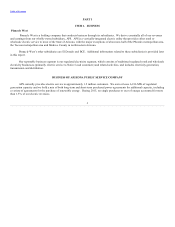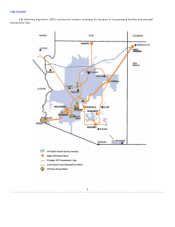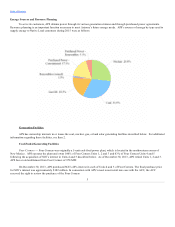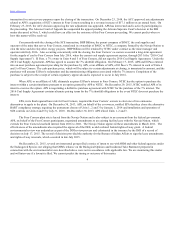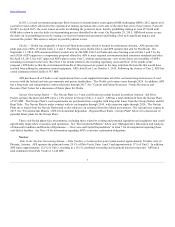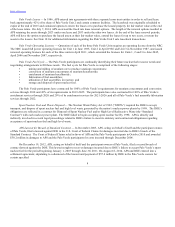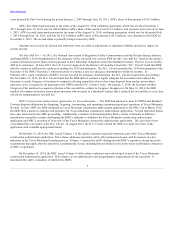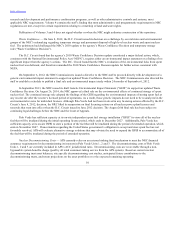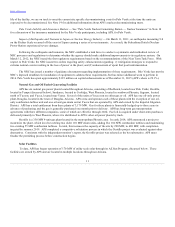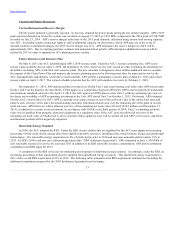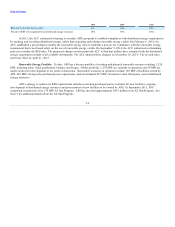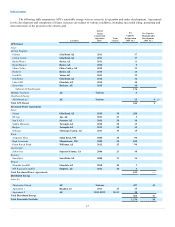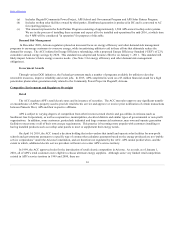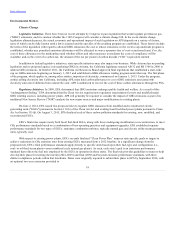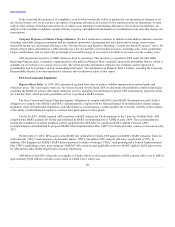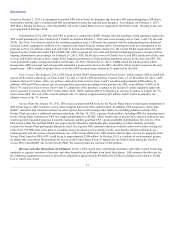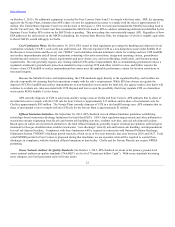APS 2015 Annual Report Download - page 16
Download and view the complete annual report
Please find page 16 of the 2015 APS annual report below. You can navigate through the pages in the report by either clicking on the pages listed below, or by using the keyword search tool below to find specific information within the annual report.
Table of Contents
Current and Future Resources
Current Demand and Reserve Margin
Electric power demand is generally seasonal. In Arizona, demand for power peaks during the hot summer months. APS’s 2015
peak one-hour demand on its electric system was recorded on August 15, 2015 at 7,031 MW, compared to the 2014 peak of 7,007 MW
recorded on July 23, 2014. APS’s reserve margin at the time of the 2015 peak demand, calculated using system load serving capacity,
was 28%. Excluding certain contractual rights to call on additional capacity on short notice, which APS may use in the event of
unusual weather or unplanned outages, the 2015 reserve margin was 21%. APS anticipates the reserve margin for 2016 will be
approximately 24%. Due to expiring purchase contracts and anticipated load growth, APS anticipates additional resources will be
needed by 2017 in order to maintain its 15% planning reserve criteria.
Future Resources and Resource Plan
On May 8, 2015, the ACC acknowledged APS’s 2014 resource plan. Under the ACC’s resource planning rule, APS’s next
resource plan would be due on April 1, 2016. On September 16, 2015, however, the ACC issued an order extending the timeframe for
all utilities, including APS, to file their next resource plans. The new schedule is designed to allow utilities additional time to consider
the impacts of the Clean Power Plan and improve the resource planning process by allowing more time for input and review by the
ACC and applicable stakeholders. Under the revised schedule, APS will file a preliminary resource plan on March 1, 2016 and a final
resource plan on April 3, 2017. The revised schedule provides that the ACC will complete its review by February 1, 2018.
On September 11, 2014, APS announced that it would close Cholla Unit 2 and cease burning coal at the other APS-owned units
(Units 1 and 3) at the plant by the mid-2020s, if EPA approves a compromise proposal offered by APS to meet required environmental
and emissions standards and rules. On April 14, 2015, the ACC approved APS's plan to retire Unit 2, without expressing any view on
the future recoverability of APS's remaining investment in the Unit. APS closed Unit 2 on October 1, 2015. Previously, APS estimated
Cholla Unit 2’s end of life to be 2033. APS is currently recovering a return on and of the net book value of the unit in base rates and
plans to seek recovery of the unit’s decommissioning and other retirement-related costs over the remaining life of the plant in its next
retail rate case. APS believes it will be allowed recovery of the remaining net book value of Unit 2 ($122 million as of December 31,
2015), in addition to a return on its investment. In accordance with GAAP, in the third quarter of 2014, Unit 2’s remaining net book
value was reclassified from property, plant and equipment to a regulatory asset. If the ACC does not allow full recovery of the
remaining net book value of Cholla Unit 2, all or a portion of the regulatory asset will be written off and APS’s net income, cash flows,
and financial position will be negatively impacted.
Renewable Energy Standard
In 2006, the ACC adopted the RES. Under the RES, electric utilities that are regulated by the ACC must supply an increasing
percentage of their retail electric energy sales from eligible renewable resources, including solar, wind, biomass, biogas and geothermal
technologies. The renewable energy requirement is 6% of retail electric sales in 2016 and increases annually until it reaches 15% in
2025. In APS’s 2009 retail rate case settlement agreement (the “2009 Settlement Agreement”), APS committed to have 1,700 GWh of
new renewable resources in service by year-end 2015 in addition to its RES renewable resource commitments. APS met its settlement
commitment and RES target for 2015.
A component of the RES is focused on stimulating development of distributed energy systems. Accordingly, under the RES, an
increasing percentage of that requirement must be supplied from distributed energy resources. This distributed energy requirement is
30% of the overall RES requirement of 6% in 2016. The following table summarizes the RES requirement standard (not including the
additional commitment required by the 2009 Settlement Agreement) and its timing:
13


